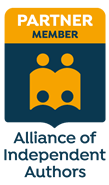From Research to Readability: Helping Readers Understand Your Work
You’ve worked hard to gain unique insights in your field of research, and now you want the world to learn about it. But how can you cram years of discovery into a piece of writing that makes sense to people who know nothing about your field?
If you aren’t sure where to begin, you’re not alone. Writing for other experts and academics is not the same as writing a book or other content for non-experts.
It can be hard to decide:
- what to include and what to leave out
- what to explain and in how much detail
- who you want to read it
- what you want to accomplish
Here’s the trick: you need to figure out the last two points before the first two. Many researchers get this wrong. It’s not about what you want to tell people—it’s about who wants (or needs) to know what.
So the first question you need to answer is, who are your readers? That answer will guide everything that comes after.
Are you writing a book for
- scholars in your field
- people who might benefit from applying your research findings in their lives
- people who are interested in your field but don’t know much about it
- people who work in a field where your research is relevant
Once you know who you’re targeting, you can write directly to those readers.
Writing in Plain Language
You’ve probably heard the term “plain language” before, but you may not really know what it means. In 2023, the International Organization for Standardization (ISO) published a global standard for communicating in plain language. Spoiler alert: it’s not about reading grade levels or “dumbing down” your writing.
Under the standard, the four governing principles of plain language are:
With your target audience in mind, follow the tips below to implement the four plain language principles.
Readers get what they need
Giving the reader the information they’re looking for, and nothing else, should be a priority. Resist the urge to include everything you find interesting or important. Focus on your readers’ goal—why they specifically would pick up your book. Give them the information to accomplish it, without overwhelming them.
For example: let’s say you have been studying the effectiveness of lavender as a mosquito repellent. Your readers want to know whether it works, but they likely won’t care about the processes you used to extract the lavender from the plants for your research (unless it’s something they can do themselves). They also won’t care about the fifteen other herbs and flowers you tested that had no effect on mosquitoes.
Deciding what not to include can be really hard for subject matter experts. Getting an outside perspective is useful to help you figure out what is relevant to readers. Find some people who are part of your future readership. Ask them what they would want to know about your topic and how they think your insights could be useful to them.
Readers can easily find what they need
Writing in plain language isn’t just about the words you use or how long your sentences are. It begins with how you structure your writing.
Does the information flow in a logical order for readers? Is it broken up into small chapters and sections so they can find the bit they’re most interested in reading? Have you provided a useful table of contents and maybe an index so people can look for specific information?
Readers can easily understand what they find
This is where your wording and sentences need some attention. The “curse of knowledge” means that the more you know about a topic, the harder it is to relate to readers who know little or nothing about it. Avoid assuming that “everyone knows this.” Either replace or explain field-specific terminology.
For example, if I were to explain clear writing by discussing misplaced modifiers, noun chains, adverbial phrases, independent clauses … are you still there?
Give early drafts of your work to readers from outside your field. Ask them to highlight terms they aren’t familiar with and passages they found hard to understand. Professional editors will also help you identify places where you are being too technical or using unfamiliar terms. But getting early feedback before you send your work to an editor will save you time and money by getting you closer to a readable manuscript.
Readers can easily use the information
What are your readers hoping to accomplish by reading your work? Is it a how-to or self-help book that they want to use to make something happen? Should the information change or inform their opinion about something? Are you hoping to influence their lifestyle or their values? Do you want to pique their curiosity?
Keep the goal of your writing at the center of the process. If you find information in your manuscript that doesn’t help accomplish that goal, put it aside for a different project. Your job is to use your vast knowledge to help make things happen—and the more focused you are on that goal, the more likely your readers will be to get on board with it.
Ready to Start?
To turn your research into a book that people will actually read, do the following:
- Identify your target readers.
- Define their goal (why they will read your book).
- Build an outline of chapters and sections structured to make sense to your readers.
- Check that everything you included is tied to your readers’ goal (take out anything that isn’t).
- Write your first draft.
- Edit to remove academic jargon or technical language, and make the sentences and paragraphs easier to understand.
- Work with an editor to polish it with your readers in mind.
Ready? Go write a book!
